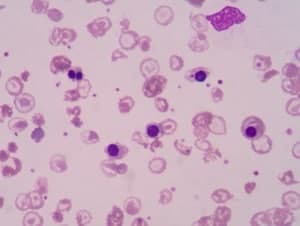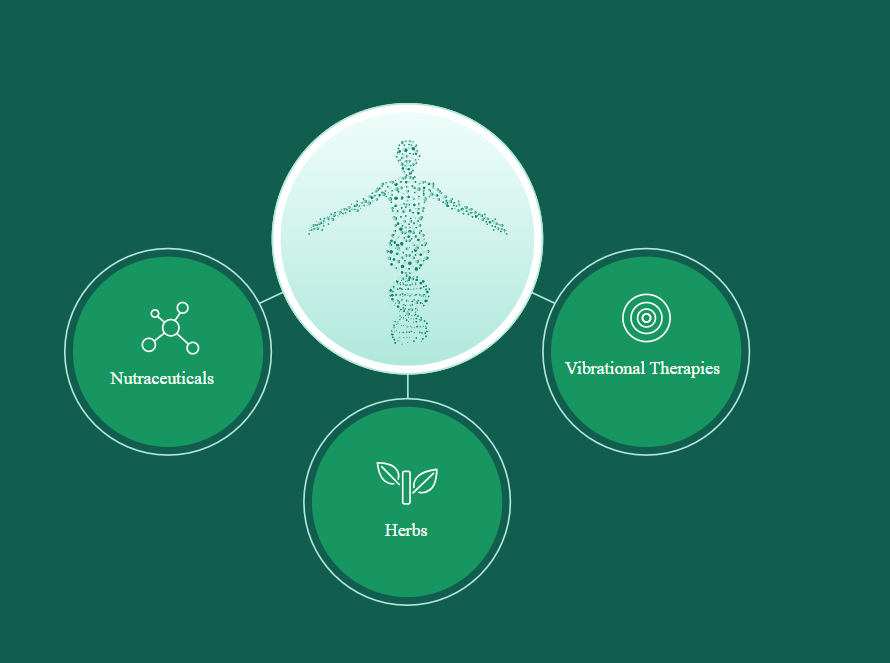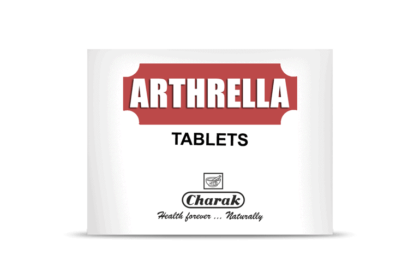Anemia is the deficiency of red cells or of haemoglobin in the blood, and it can develop over a long period of time. In mild cases, it does not even reveal any symptoms. However, this only means most people realize that they are anemic a bit late, allowing the associated health risks to aggravate each day. Lack of energy and fatigue can restrict one from enjoying life to its fullest and leave the vital organs seriously malnourished. Moreover, anemia reduces oxygen transport in the blood and can lead to secondary organ dysfunction including heart arrhythmia and heart failure. Conventional medicine has no way of addressing the root cause of anemia, which has to do with the liver not breaking down iron and hence the body not assimilating it. The deficiency in blood cells disrupts the healing and repairing benefits of oxygen and needs to be balanced across the molecular and vibrational spectrum of life. This is why our doctors have dedicated their lives to precedent-setting natural research and formulated kits that combine the best of what the earth has to offer on enhancing blood parameters. We invite you to join the Biogetica family today and vow to be with you every step of the way.
Vital Information On Anemia
Anemia is a disorder that is characterized by abnormally low levels of hemoglobin. It is directly or indirectly responsible for many diseases. This is because the lowered oxygen carrying capacity of the blood leads to poor oxygenation of tissues, which in turn results in degenerative changes and a general drop in immunity levels.
Anemia can be caused by a multitude of factors and thus remedial measures depend on the causative factors. Allopathic treatments for Anemia include Iron, Folic acid, ferrous sulphate, Vitamin B12 etc…

However, these Allopathic treatments do not cure Anemia. They are merely a way of suppressing symptoms. On the other hand, natural remedies that include evidence-based herbs, advanced resonance homeopathic ingredients and ground breaking nutraceuticals attempt to address the root cause of the condition and use a holistic approach. Sooner or later, you’ll realize that nature completes you in many ways.
How Do Biogetica’s Protocol For Improving Blood Parameters Work?
Biogetica’s multidisciplinary kits blend clinically verified ingredients with other versatile constituents that are traditionally believed to work by addressing the root cause of the problem- absorption and assimilation issues. We say this because our Doctors have selected each ingredient based on precedent setting research from every tradition and you will sooner or later realize that Nature completes you in many ways, and this is why we are able to stand by these products night and day. Biogetica’s ground breaking therapeutic kits combining advanced nutraceuticals, standardized herbal extracts and Bio-energetic resonance Homeopathies potentially work by: **
- Supplying the body with iron and other essential nutrients in a form, which is easily absorbed by the body.
- Improving the body’s uptake of iron from food.
- Promoting red blood cell production.
- Cleansing the blood and lymphatic system.
- Stimulating liver processes and other gradients that are responsible for the quality and quantity of blood.
- Correcting underlying pathologies and deficiencies in your body.
- Supplying adequate oxygen to the organs, thereby boosting your energy.
- Optimizing blood functions.
Since homeopathy is the only recognized natural system of medicine in the USA, only our homeopathic products can be related to Anemia and the rest of the products in the kit can only be used to nourish and improve blood components. In India, China and other lands that recognize herbal medicine, the herbs of our protocol can also be used to treat Anemia.
As per the FTC Enforcement Policy Statement on Marketing Claims for OTC Homeopathic Drugs anyone selling homeopathy must state:
- There is insufficient scientific evidence that homeopathy works.
- The product’s claims are based only on theories of homeopathy from the 1700s that are not accepted by most modern medical experts.
However, we have dedicated our lives to Natural Healing and can vouch for what nature has to offer. We are with you in this every step of the way!
Try our Products Now! Our Unconditional 100 % Money Back Guarantee is Valid for 90 days.
If you are not amazed by the results, just let us know and we’ll send a prompt refund. NO QUESTIONS ASKED.
We put people before money and will deliver these products to you against any donation if you truly cannot afford them.
If you are a Doctor’s office looking to place bulk orders please order from the links on the right and use your account I.D. in the coupon field.
Get moving on the road to healing today!*
Anemia is a common condition manifested when your blood has a lower than normal number of red blood cells. Anemia could also occur if your red blood cells don’t contain enough hemoglobin, which is an iron-rich protein that gives blood its red color. This protein also helps red blood cells carry oxygen from the lungs to the rest of your body.
In anemia, your body doesn’t get adequate oxygen-rich blood making you feel tired or weak. You also may experience other symptoms, such as shortness of breath, dizziness, or headaches.
Severe or chronic anemia can adversely affect your heart, brain, and other organs in your body. Very severe anemia may prove fatal.

The tissues of the body need a regular supply of oxygen to stay healthy. The hemoglobin contained in red blood cells, allows them to carry oxygen throughout the body. Red blood cells live for only about 120 days. When they die, the iron they contain is returned to the bone marrow and used to create new red blood cells. Anemia can develop when heavy bleeding causes significant iron loss. It may also occur when something happens to slow down the production of red blood cells or to increase the rate at which they are destroyed. When Anemia occurs, the heart tries to pump harder, so as to increase the tissue perfusion. But, it may overwork itself, enlarge, or even fail.
Anemia thus can be mild, moderate, or severe enough to lead to life-threatening complications.
Types Of Anemia
Anemia can be classified as:
- Iron deficiency anemia
- Folic acid deficiency anemia
- Vitamin B12 deficiency anemia
- Vitamin C deficiency anemia
- Autoimmune hemolytic anemia
- Hemolytic anemia
- Sickle cell anemia
- Aplastic anemia
- Anemia due to chronic disease
- Anemia is caused by bleeding, decreased red blood cell production, or increased red blood cell destruction.
- Poor diet can contribute to vitamin deficiency and iron deficiency anemia, in which fewer red blood cells are produced.
- Hereditary disorders and certain diseases can cause increased blood cell destruction.
- However, excessive bleeding is the most common cause of anemia, and the speed with which blood loss occurs has a significant effect on the severity of symptoms.
Acute blood loss is usually the result of childbirth, injury, a ruptured blood vessel or surgery.
Weakness, fatigue, and a run-down feeling may be signs of mild anemia. Other signs include skin that is pasty or sallow, or lack of color in the creases of the palm, gums, nail beds, or lining of the eyelids.
Other symptoms of anemia are:
- Chest pain (Angina pectoris)
- Headache
- Inability to concentrate and/or memory loss
- Inflammation of the mouth (stomatitis) or tongue (glossitis)
- Insomnia
- Irregular heartbeat
- Loss of appetite
- Dry, brittle or ridged nails
- Rapid breathing
- Sores in the mouth, throat, or rectum
- Sweating
- Swelling of the hands and feet
- Ringing of the ears (Tinnitus)
- Unexplained bleeding or bruising
- A craving to chew ice, paint, or dirt (Pica)
Vitamin B12 deficiency anemia is another type of megaloblastic anemia. It develops when the body does not absorb enough of this nutrient, which is necessary for the creation of red blood cells. The body stores large amounts of B12, so this condition may not become apparent until as long as four years after B12 absorption slows down or stops. The resulting drop in red blood cell production can cause:
- Loss of muscle control.
- Loss of sensation in the legs, hands and feet.
- Soreness or burning of the tongue.
- Weight loss.
- Yellow-blue color-blindness.
Vitamin C Deficiency Anemia
This is a rare disorder that causes the bone marrow to manufacture abnormally small red blood cells. Vitamin C deficiency anemia results from a severe and long-standing dietary deficiency.
Hemolytic Anemia
Hemolytic anemia is a condition in which infection or antibodies destroy red blood cells more rapidly than bone marrow can replace them. Some are born with this condition and some may acquire it later on in life.
Thalassemia
An inherited form of hemolytic anemia, thalassemia stems from the body’s inability to manufacture as much normal hemoglobin as it needs. There are two categories of thalassemia, depending on which of the amino acid chains is affected. (Hemoglobin is composed of four chains of amino acids.) In alpha-thalassemia, there is an imbalance in the production of the alpha chain of amino acids; in beta-thalassemia, there is an imbalance in the beta chain. Alpha-thalassemia most commonly affects people of African descent (25% have at least one gene); beta-thalassemia most commonly affects people of Mediterranean and Southeast-Asian ancestry. It is characterized by production of red blood cells that are unusually small and fragile, thalassemia only affects people who inherit the gene for it from each parent (autosomal recessive inheritance).
Autoimmune Hemolytic Anemia
Warm antibody hemolytic Anemia is the most common form of this disorder. This condition occurs when the body produces auto antibodies that coat red blood cells. The coated cells are destroyed by the spleen, liver or bone marrow.
In cold antibody hemolytic Anemia, the body attacks red blood cells at or below normal body temperature. This condition is usually mild, short-lived and disappears without treatment.
The acute form of this condition frequently develops in people who have had pneumonia, mononucleosis, or other acute infections.
Sickle Cell Anemia
Sickle cell Anemia is a chronic, incurable condition that causes the body to produce defective hemoglobin, which forces red blood cells to assume an abnormal crescent shape. Unlike normal oval cells, fragile sickle cells cannot hold enough hemoglobin to nourish body tissue. The deformed shape makes it hard for sickle cells to pass through narrow blood vessels. When capillaries become obstructed, a life-threatening condition called sickle cell crisis is likely to occur.
Sickle cell Anemia is hereditary. It almost always affects people of African or Mediterranean descent. A child who inherits the sickle cell gene from each parent will have the disease, but a child who inherits the gene from only one parent will carry the sickle cell trait, but will not have the disease.
Aplastic Anemia
Aplastic Anemia is characterized by a decreased production of red and white blood cells and platelets (disc-shaped cells that allow the blood to clot). It is sometimes curable by bone marrow transplant, but is potentially fatal This disorder may be inherited or acquired as a result of recent severe illness, long-term exposure to industrial chemicals, or use of anticancer drugs and certain other medications.
Anemia Of Chronic Disease
Cancer, chronic infection or inflammation, kidney and liver disease often cause mild or moderate Anemia. Chronic liver failure generally produces the most severe symptoms.
Diagnosis
Personal and family health history may suggest the presence of certain types of Anemia. Laboratory tests that measure the percentage of red blood cells or the amount of hemoglobin in the blood are used to confirm the diagnosis and determine which type of Anemia is responsible for a patient’s symptoms.
X-rays and examinations of bone marrow may be used to identify the source of bleeding.






 100% Money Back Guarantee
100% Money Back Guarantee We have a 100% money-back guarantee, to support our firm belief in our products, and to build trust in customers who have been facing battles they thought would be lifelong! You may return the products within 90 days of your order date for a full refund of the purchase price. You may alternatively request a free consultation and additional remedies if you are not 100% better. Our mission is fulfilled only when you are better. Hence, we stand by our customers and do what it takes to make you feel great! We can afford to do this, because the customers who re-order or refer us to friends and family, are 20 times more than those who ask for a return. So, go ahead and give us a try. You’ll be glad you did.
We have a 100% money-back guarantee, to support our firm belief in our products, and to build trust in customers who have been facing battles they thought would be lifelong! You may return the products within 90 days of your order date for a full refund of the purchase price. You may alternatively request a free consultation and additional remedies if you are not 100% better. Our mission is fulfilled only when you are better. Hence, we stand by our customers and do what it takes to make you feel great! We can afford to do this, because the customers who re-order or refer us to friends and family, are 20 times more than those who ask for a return. So, go ahead and give us a try. You’ll be glad you did.


